#REGION
Explore tagged Tumblr posts
Text

Street scene in Alatri, Lazio region of Italy
Italian vintage postcard
#postkarte#briefkaart#Street#scene#carte postale#photography#Lazio#vintage#postal#postcard#ephemera#photo#ansichtskarte#Alatri#tarjeta#historic#postkaart#Italy#Italian#region#sepia
21 notes
·
View notes
Text
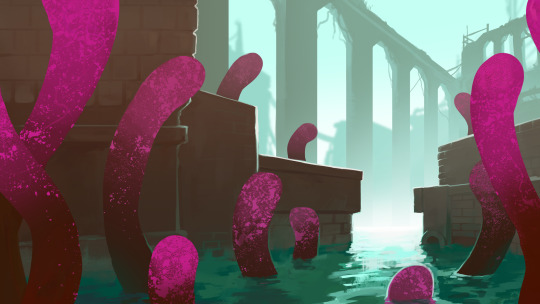

new rain world regions just dropped (underpass mod (coming soon))
693 notes
·
View notes
Text
BUFFER OVERFLOW

160 notes
·
View notes
Text

ART NOUVEAU - Wrought ironwork and stained glass door in Brussels, BELGIUM
#art nouveau#ironwork#stained glass#door#entrance#brussels#flemish#flanders#walloon#region#belgium#europe
218 notes
·
View notes
Text
That Midwest Magick

Witchcraft in the American Midwest is a complex blend of indigenous traditions, European folk magick, spiritualism, and the influence of modern witchcraft movements. Unlike New England, which is infamous for its witch trials, the Midwest has a more subtle but rich history of magickal practices, folk beliefs, and occult traditions that have shaped the region’s spiritual landscape.
Indigenous Traditions and Early Beliefs
Before European settlers arrived, the Midwest was home to numerous Native American tribes, including the Lakota, Ojibwe, Potawatomi, and Ho-Chunk. Many indigenous spiritual traditions involved rituals, spirit communication, and herbal healing, practices that were later viewed as "witchcraft" by European settlers.
Common Indigenous Spiritual Practices:
Shamanic Healing - Medicine people or shamans used herbs, songs, and rituals to heal illnesses and communicate with spirits.
Dreamwork & Vision Quests - Dreams and visions were seen as powerful messages from the spirit world.
Shape-shifting Legends - Many tribes had stories of beings that could transform between human and animal forms, such as the Wendigo or the Skinwalker.
When settlers arrived, they often misunderstood these practices, sometimes labeling indigenous spiritual leaders as witches or sorcerers. The suppression of indigenous spirituality through boarding schools and forced Christianization led to many traditional practices being hidden or adapted.

European Settlers and Folk Magick
The Midwest was settled by diverse groups, including Germans, Scandinavians, Irish, and Eastern Europeans, each bringing their own folk magick traditions.
German Powwow & Braucherei - German immigrants brought Powwow (also called Braucherei), a Christian folk magick system that blended prayer, herbalism, and magical charms for healing and protection. Powwow practitioners were sometimes accused of practicing witchcraft, but the tradition survived in rural Midwestern communities.
Scandinavian Trolldom - Scandinavian settlers brought Trolldom, a form of folk magick that included protective charms, rune work, and spells to ward off evil. Many Midwestern Norwegians and Swedes retained aspects of their magical traditions in the form of folk remedies and rituals for protection.
Irish & Scottish Witch Lore
Settlers of Irish and Scottish descent brought Faerie Beliefs and Second Sight traditions, which influenced local folklore. Stories of banshees, faerie rings, and "the Evil Eye" persisted in rural communities.
Witchcraft Accusations in the Midwest
While the Midwest did not experience the large-scale witch hunts of New England, accusations of witchcraft did occur in rural communities, especially in the 19th and early 20th centuries.
Cases of Witchcraft Accusations:
The "Hex Murder" of York County, Pennsylvania (1928) - Although not in the Midwest, this case involved a Powwow healer who was murdered because his client believed he had been cursed. It highlighted the persistence of belief in hexes and folk magick in rural America.
Witch Scares in Rural Communities - Throughout the Midwest, stories circulated of "witches" who could curse livestock, cause illness, or use the Evil Eye. These fears often led to quiet shunning rather than full-blown trials.

The Rise of Spiritualism and Occult Movements
The Midwest played a significant role in the Spiritualist movement of the 19th and early 20th centuries. Spiritualism—centered on communicating with the dead—was often seen as a blend of science, religion, and occult practice.
Key Spiritualist Centers in the Midwest:
Camp Chesterfield (Indiana) - A spiritualist community founded in the late 19th century, which remains active today.
Lily Dale Assembly (New York, but influential in the Midwest) - A center for mediums that inspired similar gatherings in Ohio, Michigan, and Illinois.
Harry Houdini (Wisconsin-born Magician & Skeptic) - Houdini, originally from Appleton, Wisconsin, became famous for exposing fraudulent spiritualists, highlighting the region’s deep engagement with occult practices.
Many Midwestern towns had local mediums, table-tipping séances, and Ouija board enthusiasts, blending occultism with folk spirituality.
20th-Century Witchcraft and the Occult Revival
By the mid-20th century, British Wicca and other forms of modern witchcraft spread to the Midwest. Key developments include:
Raymond Buckland's Influence - Though Buckland introduced Wicca in New York, his teachings spread widely through the Midwest in the 1960s and 1970s.
Festivals and Pagan Gatherings - Events like Pagan Spirit Gathering (PSG), held in the Midwest since the 1980s, became major hubs for modern witches and pagans.

Hoodoo and Folk Magick in Midwestern Cities
Cities like Chicago, Detroit, and St. Louis became centers for Hoodoo, a form of African American folk magick that includes rootwork, candle magick, and mojo bags. The Great Migration brought these traditions from the South, influencing local magickal practices.
Occult Bookstores & Influences
The Occult Bookstore (Chicago, IL) - One of the oldest metaphysical bookstores in the U.S., operating since 1918.
The Buckland Museum of Witchcraft & Magick (Cleveland, OH) - Founded to preserve the history of witchcraft and the occult.
Modern Practices and Traditions
The Midwest remains a thriving area for witchcraft, paganism, and occult traditions. Some key features include:
Eclectic Witchcraft - Many practitioners blend Wicca, folk magic, and indigenous spirituality.
Revival of Traditional Witchcraft - Some Midwestern witches focus on Appalachian and Ozark folk magic, connecting with their ancestral roots.
Urban Witchcraft - Cities like Chicago and Minneapolis have vibrant witchcraft communities, including LGBTQ+ and activist-oriented witches.
Midwestern Witchcraft Gatherings & Groups
Pagan Spirit Gathering (PSG) - A major annual pagan and witchcraft festival.
Michigan Pagan Fest - A gathering for witches, pagans, and occultists.
Local Covens & Meetup Groups - Many small covens and informal groups operate throughout the Midwest.
The history of witchcraft in the American Midwest is one of quiet resilience and adaptation. From indigenous spirituality to European folk magic, from 19th-century spiritualism to the modern occult revival, the Midwest has fostered a unique blend of mystical traditions. Today, it continues to be a thriving center for magical practitioners, blending old traditions with new interpretations.

#midwest#american midwest#us history#illinois#indiana#iowa#ohio#wisconsin#michigan#witchcraft#magick#witch#witchblr#witch community#region#eclectic witch#eclectic#pagan#lefthandpath#traditional witchcraft#eclectic pagan#eclectic witchcraft#spellwork#spirit#shapeshifting#Mythology#legend#Local#history#heartland
72 notes
·
View notes
Text
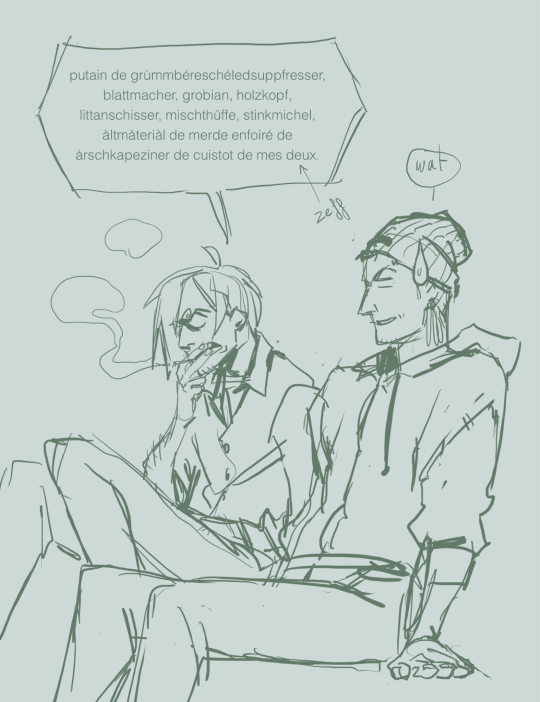
àrschkapeziner has always been a favorite of mine
literal-ish translation (french elsassisch) :
fucking vegetable peel soup eater, dish maker, rude, wooden-headed, people shitter, swine, stinky, shitty old tool, ass capuchin of a cooker of my balls
#art#artists on tumblr#digital art#lyon au#french au#breton zoro#elsässisch sanji#op#one piece#elsass#alsace#alsacien#regional culture#region#culture regionale
483 notes
·
View notes
Text

Bunker - Ticino - Svizzera
Bunker with false rock camouflage guarding the pass.
#architecture#landscape#jason guilbeau#concrete#new topography#photography#artists on tumblr#new topographics#bunker#schweiz#swiss alps#alps#suisse#svizzera#switzerland#armedforces#architektur#war#snow#landschaft#region
23 notes
·
View notes
Text
Day: 5 Looks To The Moon Region

I never tried the lasso tool before as krita doesn't have one so have this witch I did on my phone on ibspaint
#rain world#rainworld fanart#rain world fanart#rw art month#slugcat#Rainworld monk#looks to the moon#region#lasso tool
20 notes
·
View notes
Text
Poissive
Huge Odds Pokemon

# 99
Poison / Water
Height: 8.20 m / 26' 11"
Weight: 130 kg / 286.6 lb
Egg group: Water 1
Gender ratio: 50% male / 50% female
Poissive is a Pokémon that was once considered a symbol of good fortune, which made many people want to keep one as a companion. Over time, however, its popularity waned, resulting in many abandoned Poissives in local rivers and lakes. It has the ability to reproduce in sudden bursts, making it a problematic invasive species.
One of its most striking characteristics is its flexible and malleable body, which allows it to stretch and compress easily. This ability allows it to withstand strong currents and adapt to different aquatic environments.
Evo-> None
Poisson distribution
Poisson coefficient
Poisson (in french is fish and is like poison)
clarias batrachus (walking catfish)
Crayons
#fakemon#pokemon#creature#digital art#pokémon#digital illustration#region#begginerartist#cute pokemon#digital drawing#pkmn trainer#pkmn blog#pkmnart#pkmn fanart#poison pokemon#water pokemon#small artist#digital painting#drawing
23 notes
·
View notes
Text





Modded regions are mesmerizing
Region: Undersea
#rain world#rw#rain world downpour#rw downpour#region#rw screenshot#undersea#rw undersea#rw region#screenshots#rw mod#modded region
22 notes
·
View notes
Text

Stairs in the Abbey of Senones, Lorraine region of France
French vintage postcard
#postcard#region#carte postale#vintage#senones#lorraine#abbey#postkarte#photography#postkaart#french#photo#tarjeta#briefkaart#historic#france#postal#ansichtskarte#sepia#ephemera#stairs
444 notes
·
View notes
Text
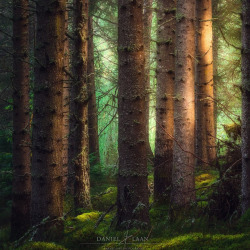

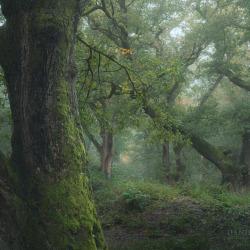



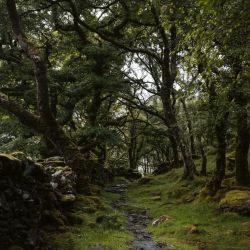
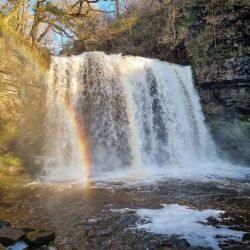

Region, one of the forests making up the kingdom of Doriath, located east and South of the river Esgalduin. The halls of Menengroth were located in Region.
Note: Region is pronounced like the latter part of Eregion, not like the English word. It is the Sindarin word for holly trees which were common in the forest.
x x x x x x x x x
Part of my forests of Beleriand boards! Others in the forest board tag! There's also more world building for Region in my Doriath tag though I want to do more if there's interest!!
60 notes
·
View notes
Text
Fetid is not actually a "Future" or "Alternate Universe" Salination
they actually have very different styles between each other!
F05 Comparisons. Actually, in Fetid, the Ripples show Salination. This does not happen the other way around
Here's a side by side
You notice how Fetid's F05 doesn't have a top on it, and almost looks as if it was BUILT that way?


Here you can see the ripple showing salination, despite it being entirely different in Fetid
This entire area resembles Salination, yet the style of Fetid everywhere is completely different! Fetid has karma glyph terrain, bridges, large mushrooms, big fans- and Salination doesn't have any of these


There's even other some differences too!
These two rooms are connected, when previously they were seperated


The pipe in F10 is flipped

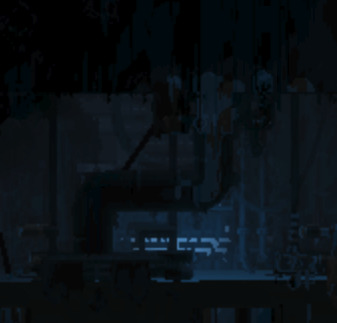
F12 is missing connections to F11


And some other very very minor differences in rendering and decor of course, but thats not as meaningful
The moment you leave this area and into E05, the tiling goes right back to the Fetid style- the fucking karma glyph flooring.


ALSO!
This area has the gilded wind of Shattered Terrace. Which is not seen anywhere else through the game, meaning that the connection to Fetid into Terrace is a lot more noticeable or prevalent
And you may also notice that Fetid is the only place with naturally spawning Rot Lizards and Sentient Rot, as well as a hidden lobetree
So what do I think happened instead?
I believe that Watcher takes place within the imagined realms mentioned in the Karma Flower dialogue. Each warp region is a bubble reality formed from memory patterns within the strands
So possibly, the bubble realm that contained Salination may have "crashed" or leaked into Fetid, possibly BECAUSE of Shattered Terrace (which is basically Spinning Top's little home, and they may have been the one to cause this)
And because Salination crashed so hard into Fetid, it created a false memory, and also caused Sentient Rot to possibly leak into the region as it begins to unfold and show its true cerebral nature
80 notes
·
View notes
Text

Beautiful abandoned traveller's chapel in the Bohemian region of the CZECH REPUBLIC
#beautiful#hermoso#abandoned#abandonado#traveller#traveler#viajeros#chapel#capilla#bohemian#region#czech republic#república checa#europe#europa
276 notes
·
View notes
Link
HELL I LOVE BEING DELUSIONAL , This is my lol region , I am with my moms(leona&diana)

11 notes
·
View notes